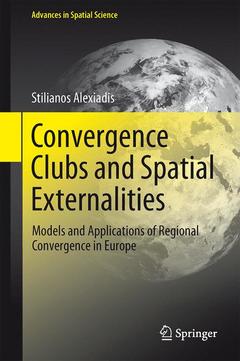Description
Convergence Clubs and Spatial Externalities, 2013
Models and Applications of Regional Convergence in Europe
Advances in Spatial Science Series
Author: Alexiadis Stilianos
Language: English
Subjects for Convergence Clubs and Spatial Externalities:
Approximative price 105.49 €
In Print (Delivery period: 15 days).
Add to cart
Publication date: 09-2012
246 p. · 15.5x23.5 cm · Paperback
246 p. · 15.5x23.5 cm · Paperback
Description
/li>Contents
/li>Biography
/li>Comment
/li>
Do dynamic externalities, in the form of technology creation, adoption and spatial agglomeration shape the pattern of regional growth in Europe? This study provides an alternative view on regional convergence. A model is developed which attributes club-convergence to existing differences with respect to the degree of technology adoption. In the first instance, empirical results suggest that the NUTS-2 regions of the EU-27 converge at a very slow rate. Further tests, however, indicate that convergence is restricted to a specific subset of regions. Such conclusions are tested further, using an alternative model of club-convergence, which incorporates the impact of spatial interaction, agglomeration externalities and technology. This shows that the convergence-club in Europe follows a certain geographical pattern and all members share similar characteristics regarding technology creation and adoption, and agglomeration externalities. ?
Preface.- 1 Introduction.- 2 Neoclassical and Post-Keynesian Theories of Regional Growth and Convergence/Divergence.- 3 'Endogenous Growth Theory' and 'New Economic Geography'.- 4 Club Convergence.- 5 Empirical Measure of Regional Convergence.- 6 EU-27 Regions: Absolute or Club Convergence? 7 'Club Convergence': Geography, Externalities and Technology.- 8 Conclusions.- Appendices.- References.
Stilianos Alexiadis is researcher in the Ministry of Rural Development & Foods of Greece, Department of Agricultural Policy & Documentation. He received a PhD from Manchester Metropolitan University and published extensively on topics of regional growth, technology and convergence.
Provides a review of the theoretical and empirical literature on regional convergence
One of few books devoted exclusively to regional convergence
Planners, policy-makers and regional development institutions in the EU can easily apply the models/methods described and conduct policy experiments?
© 2024 LAVOISIER S.A.S.




